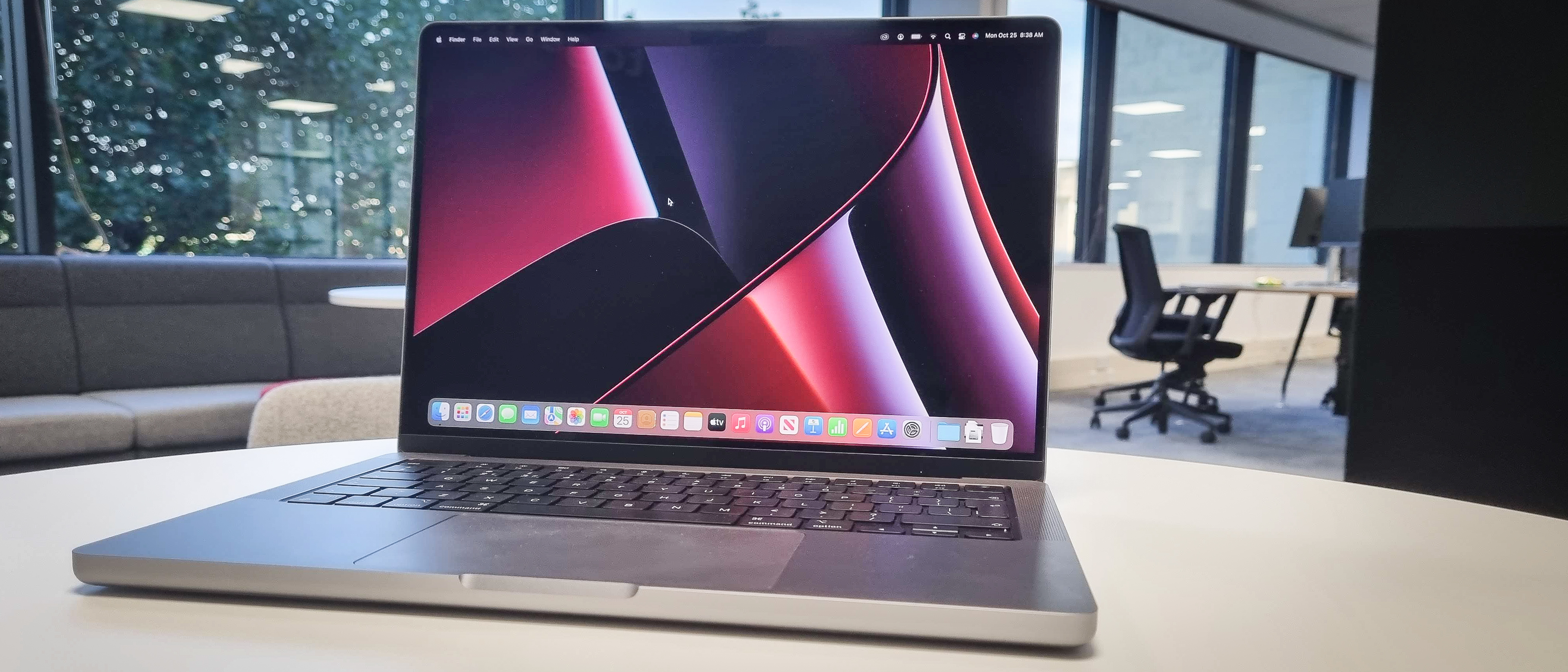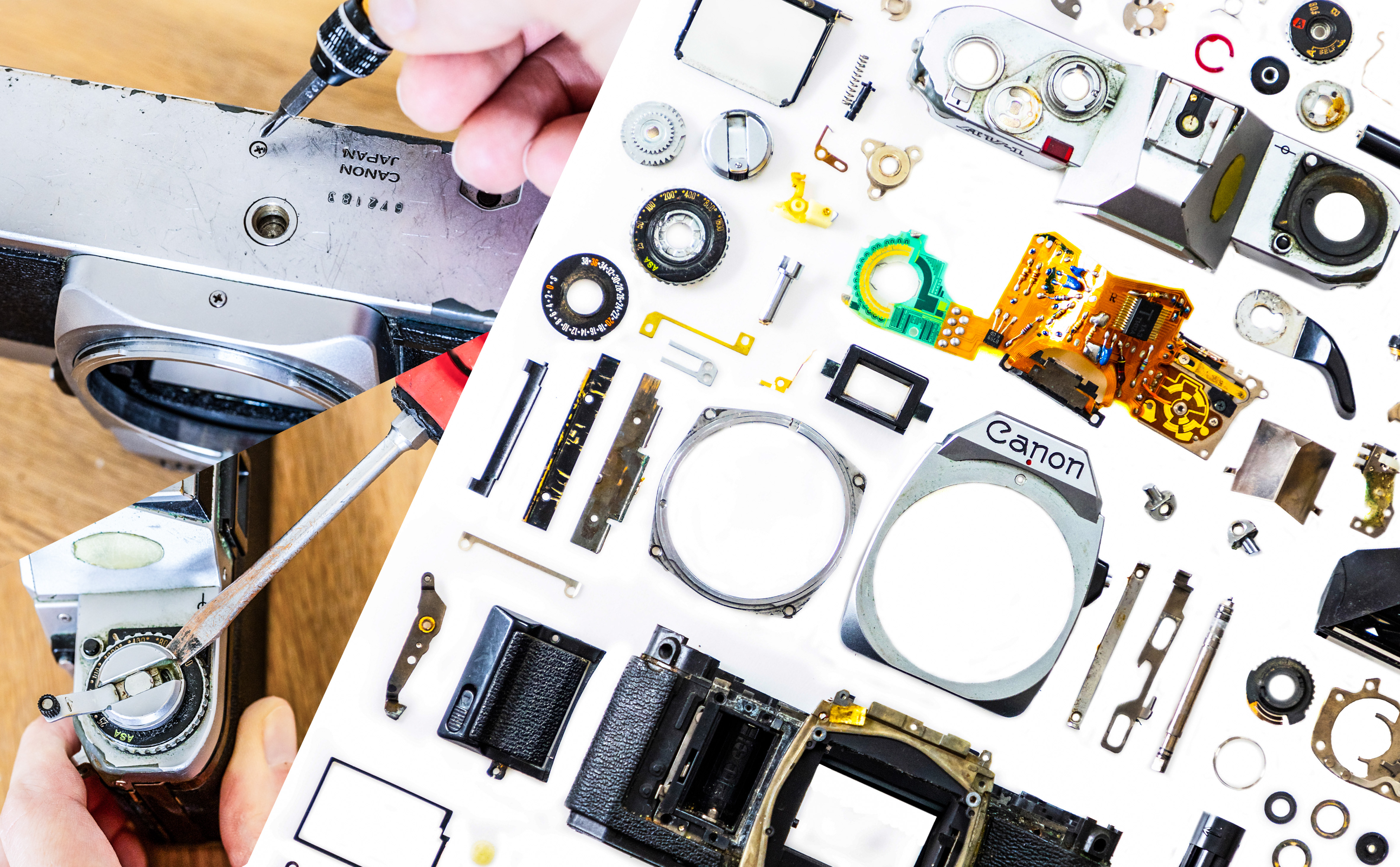Digital Camera World Verdict
The MacBook Pro 14-inch is one of the best laptops we’ve ever used. It won’t be for everyone, but if you have the budget, this portable powerhouse is an incredible investment for photographers and video makers. If you want a larger screen, the 16-inch MacBook Pro is a great alternative.
Pros
- +
Excellent screen
- +
Great performance
- +
Long lasting battery
- +
Portable
Cons
- -
Expensive
Why you can trust Digital Camera World
Apple launched the brand-new MacBook Pro 14-inch (2021) alongside the new MacBook Pro 16-inch (2021), offering a laptop that’s smaller and more portable than the 16-inch model, while offering a larger screen than the 13-inch M1 MacBook Pro from last year.
Apart from the screen size, the MacBook Pro 14-inch (2021) is almost exactly the same as the MacBook Pro 16-inch (2021), and considering we rate that as one of the best photo-editing laptops ever made, that’s a very good thing indeed.
So, the MacBook Pro 14-inch (2021) comes with the same Apple-made M1 Pro or M1 Max chips, as well as the new gorgeous mini-LED screen as well – though shrunk down to 14.2-inches. While the screen is smaller than the 16-inch model, it actually offers the same pixel density as the larger device. This means both new MacBook Pros offer the same level of graphic fidelity, and so the choice between them boils down to your preference for screen size and budget.
That’s because the MacBook Pro 14-inch (2021) is more affordable than the 16-inch model, but be warned: this is still a pricey laptop.
The 14-inch MacBook Pro starts at $1,999 / £1,899, which comes with an 8-Core CPU, 14-Core GPU M1 Pro, 16GB unified memory and 512GB SSD storage, while a more powerful model with a 10-Core CPU, 16-Core GPU M1 Pro with 16GB Unified Memory and 1TB SSD storage will set you back $2,499 / £2,399.
As with previous MacBook Pro models, you can configure the MacBook Pro 14-inch (2021) to come with up to 32GB of memory and up to 8TB of storage. You can also swap the M1 Pro chip for the much more powerful M1 Max, which comes with either a 24-core or 32-core GPU, and ups the maximum memory configuration to 64GB.
This all adds a fair amount to the price of the MacBook Pro 14-inch (2021), and the maximum specifications with a 10-core CPU and 32-core GPU M1 Max processor, 64GB of RAM and 8TB of SSD storage costs an eye-watering $5,899 / £5,799.
Meanwhile, the MacBook Pro 16-inch (2021) starts at $2,499 / £2,399 for the model with an M1 Pro chip with a 10-core CPU and 16-core GPU, with 16GB unified memory and 512GB SSD storage.
So, while the MacBook Pro 14-inch (2021) offers a whole lot of power and features for photographers, the price may be too high for many people. You’ll need to think carefully if the MacBook Pro 14-inch (2021) is the right laptop for you before you buy.
MacBook Pro 14-inch (2021) specification
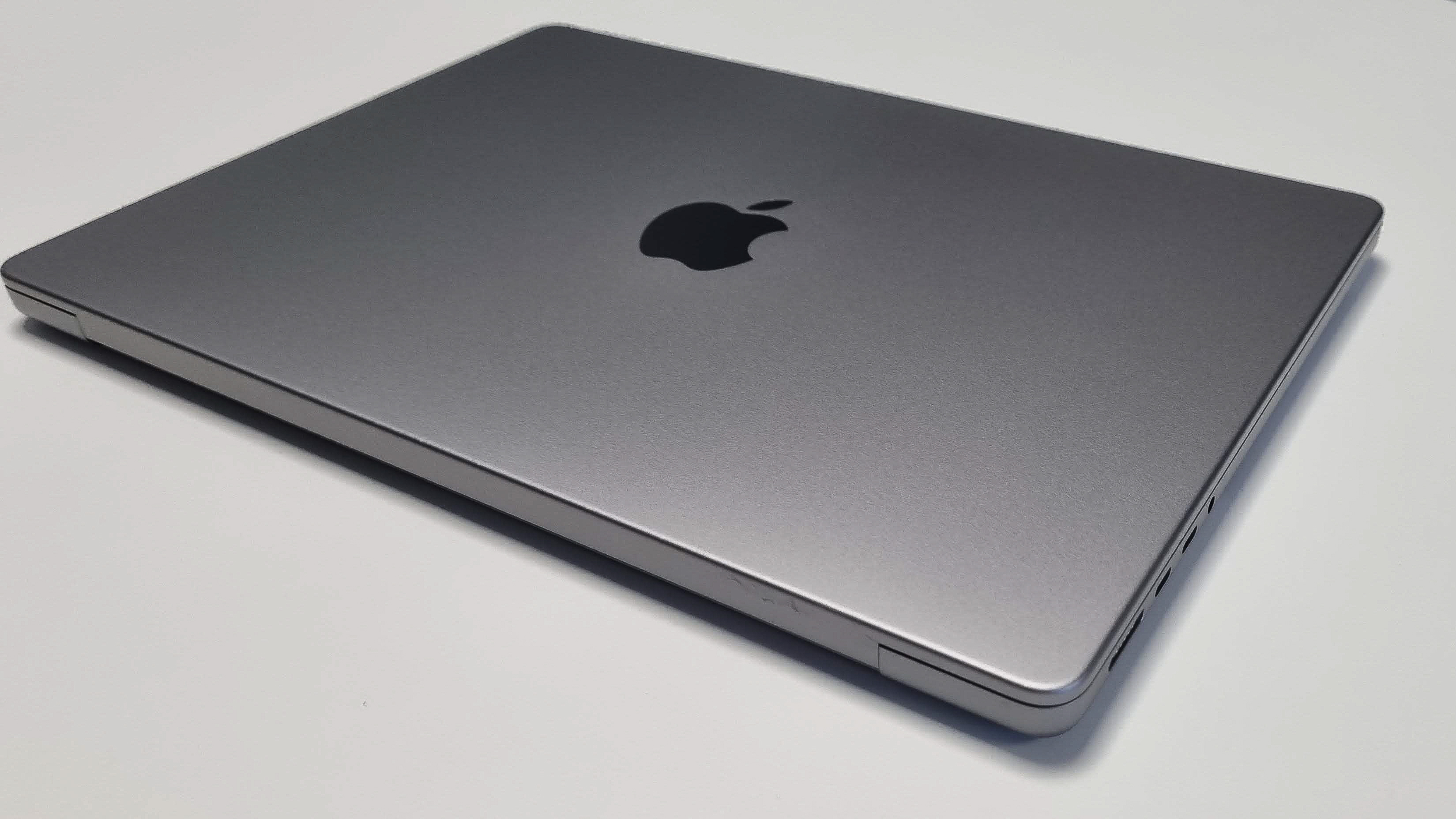
• CPU: Apple M1 Pro (10-core) / Apple M1 Max (10-core)
• Graphics: Integrated 16-core / 24-core / 32-core GPU
• RAM: 16GB / 32GB / 64GB Unified memory
• Screen: 14.2-inch, 3,024-by-1,964 Liquid Retina XDR display (mini-LED, 1,000 nits sustained brightness, wide color P3 gamut, ProMotion technology)
• Storage: 512GB – 8TB SSD
• Ports: 3x Thunderbolt 4 (USB-C), HDMI, SDXC card slot, 3.5mm headphone jack, MagSafe 3
• Connectivity: Wi-Fi 6, Bluetooth 5.0
• Camera: 1080p FaceTime HD webcam
• Weight: 3.5 pounds (1.6kg)
• Size: 12.31 x 8.71 x 0.61 inches (31.26 x 22.12 x 1.55cm; W x D x H)
• See also: Best Macbooks for photo editing in 2021
Key features
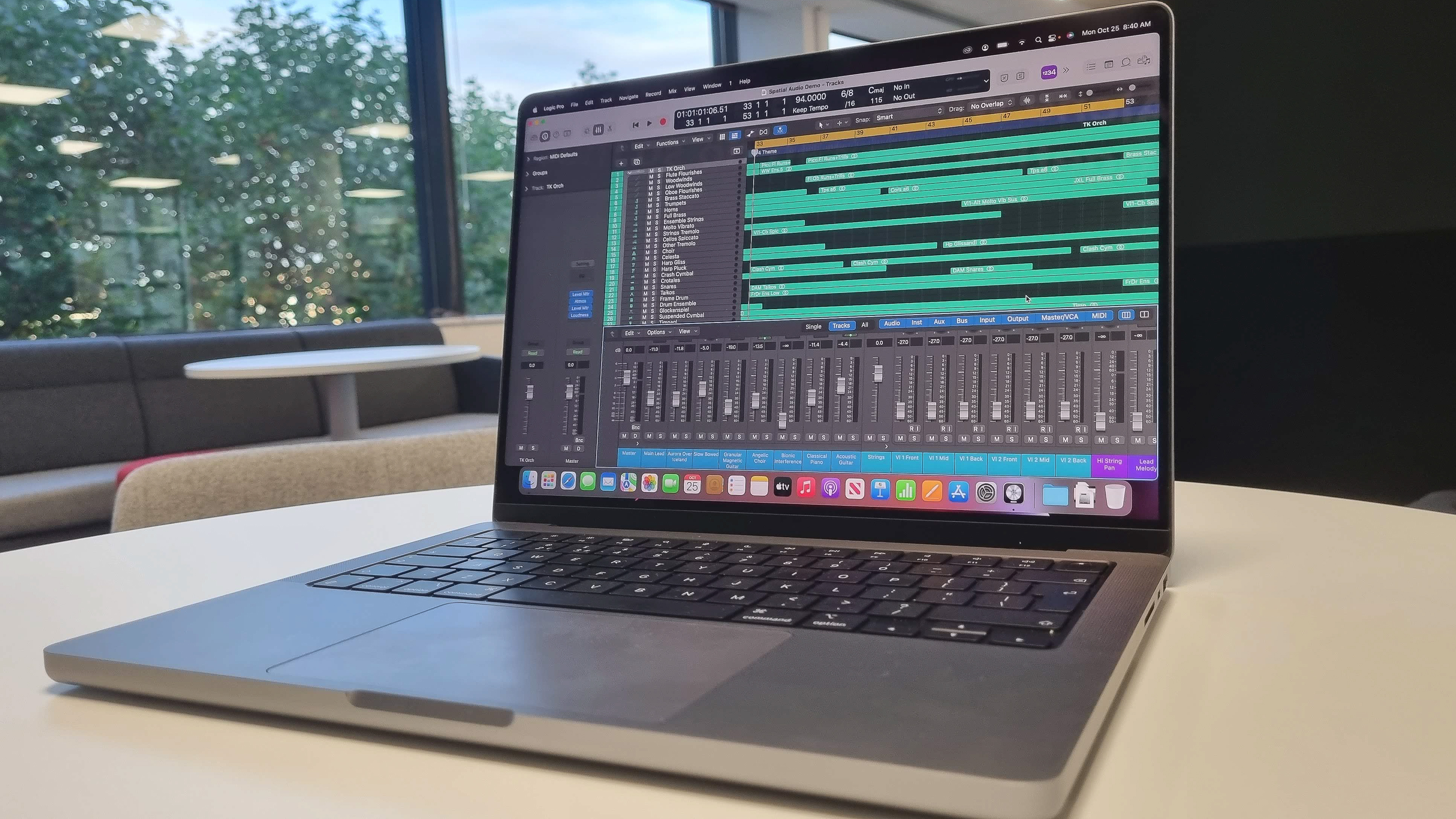
The most eye-catching feature of the MacBook Pro 14-inch is its screen. Like the larger 16-inch model, this is the best display you can currently get in a laptop thanks to its Liquid Retina XDR technology and mini-LED panel that offers incredibly vibrant and detailed images. Contrast ratio is especially high, and this means bright colors are incredibly bright, while dark colors are rich and deep.
There’s also support for the P3 wide color gamut, which allows for accurate color reproduction. Viewing your photos on the display of the MacBook Pro 14-inch really is remarkable. The screen is 14.2-inches, and has a resolution of 3,024 x 1,964. That’s not quite the highest resolution screen, but it still looks fantastic. Interestingly, the MacBook Pro 14-inch actually has the same pixel density as the 16-inch model, due to the larger MacBook having a higher resolution.
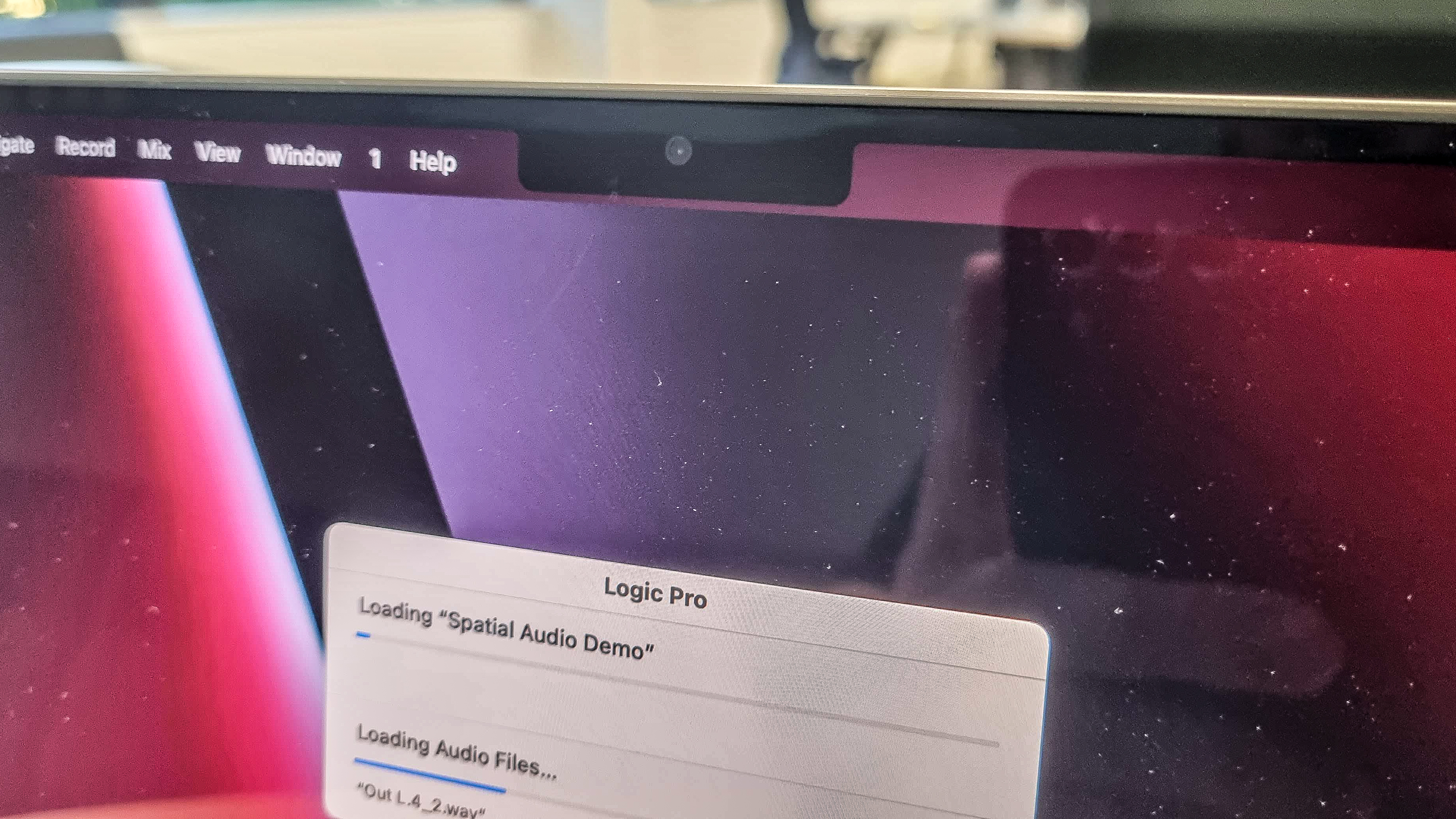
So, both screens have a density of 254 pixels per inch (PPI). The higher the PPI, the sharper and more detailed the image. Often, larger screens have lower PPI, leading to a softer image quality, but not so with the 16-inch MacBook Pro. Again, this means you can pick either the 14-inch or the 16-inch model and not have the image quality be impacted – instead it’ll be up to your own personal preference regarding screen size.
The MacBook Pro 14-inch now also comes with a 1080p Face Time webcam, a boost from the 720p resolution from previous models, and studio-quality built-in microphones. These days, many of us rely on video calls to speak to friends, family, co-workers and clients, so the upgrades here are very welcome. During our time with the MacBook Pro 14-inch, we were impressed with the clarity of the webcam’s footage, especially in low-light conditions, and the microphones did an excellent job as well.
Design and usability
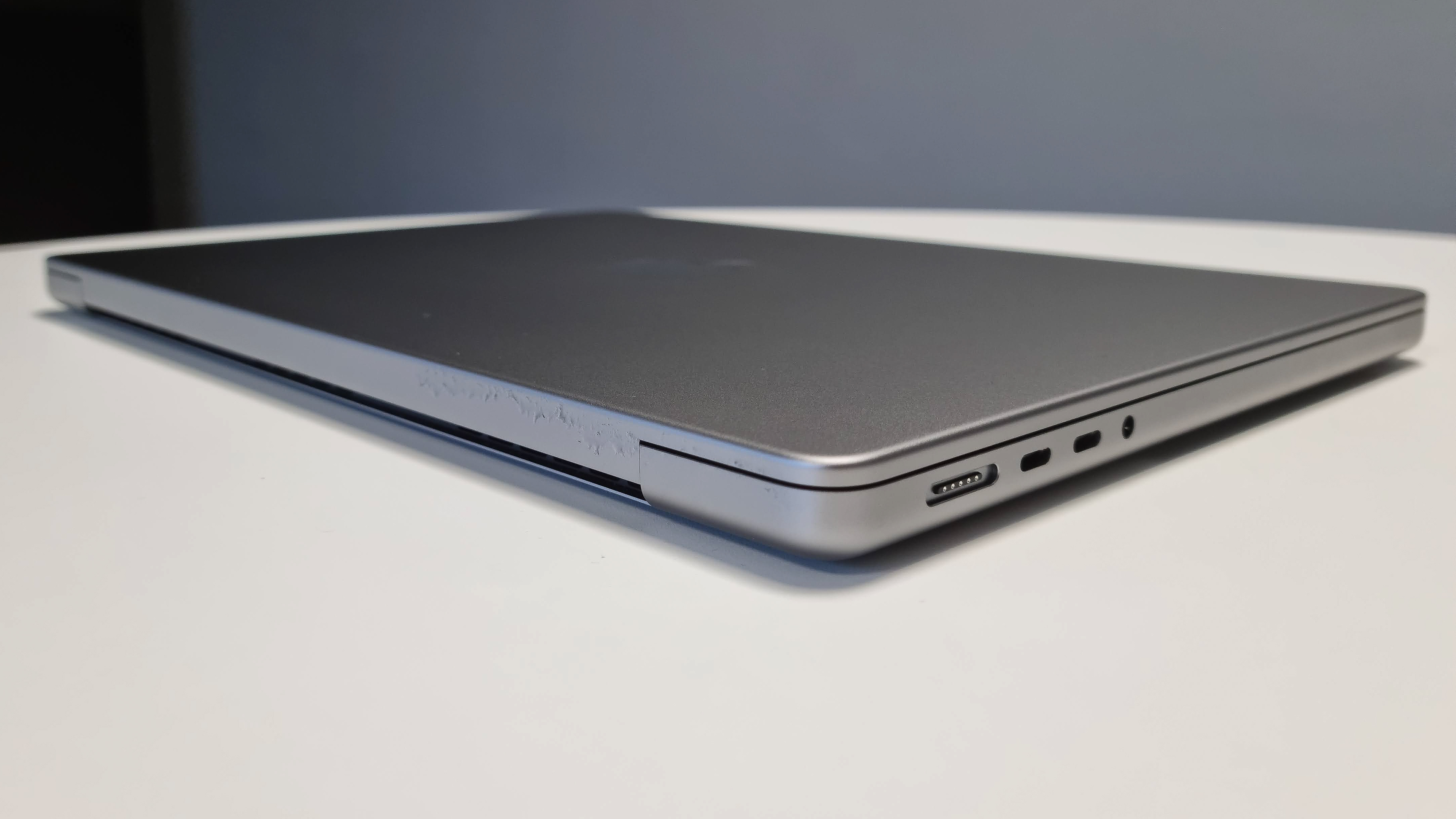
Compared to the 13-inch MacBook Pro that preceded it, the MacBook Pro 14-inch represents quite a drastic change in design. There’s that larger screen, of course, but Apple has also drastically reduced the bezels around the display, giving the laptop a much more modern look.
This also meant Apple didn’t increase the overall size of the new MacBook Pro by too much. Its dimensions are 12.31 x 8.71 0.61 inches (31.26 x 22.12 x 1.55 cm), which isn’t a lot more than the 11.97 x 8.36 x 0.61 inches (30.41 x 21.24 x 1.56cm) dimensions of the 13-inch. It’s certainly a lot more portable than the 16-inch model. If you do a lot of travelling, then the 14-inch MacBook Pro is a great choice.
The slimming of the bezels does mean there’s a noticeable notch around the webcam that intrudes on the screen. This has proved to be a very divisive design decision by Apple, and for many people, it may put them off. However, after a few minutes of using the laptop, you genuinely forget about the notch, and the extra screen real estate it offers is a fair trade off.
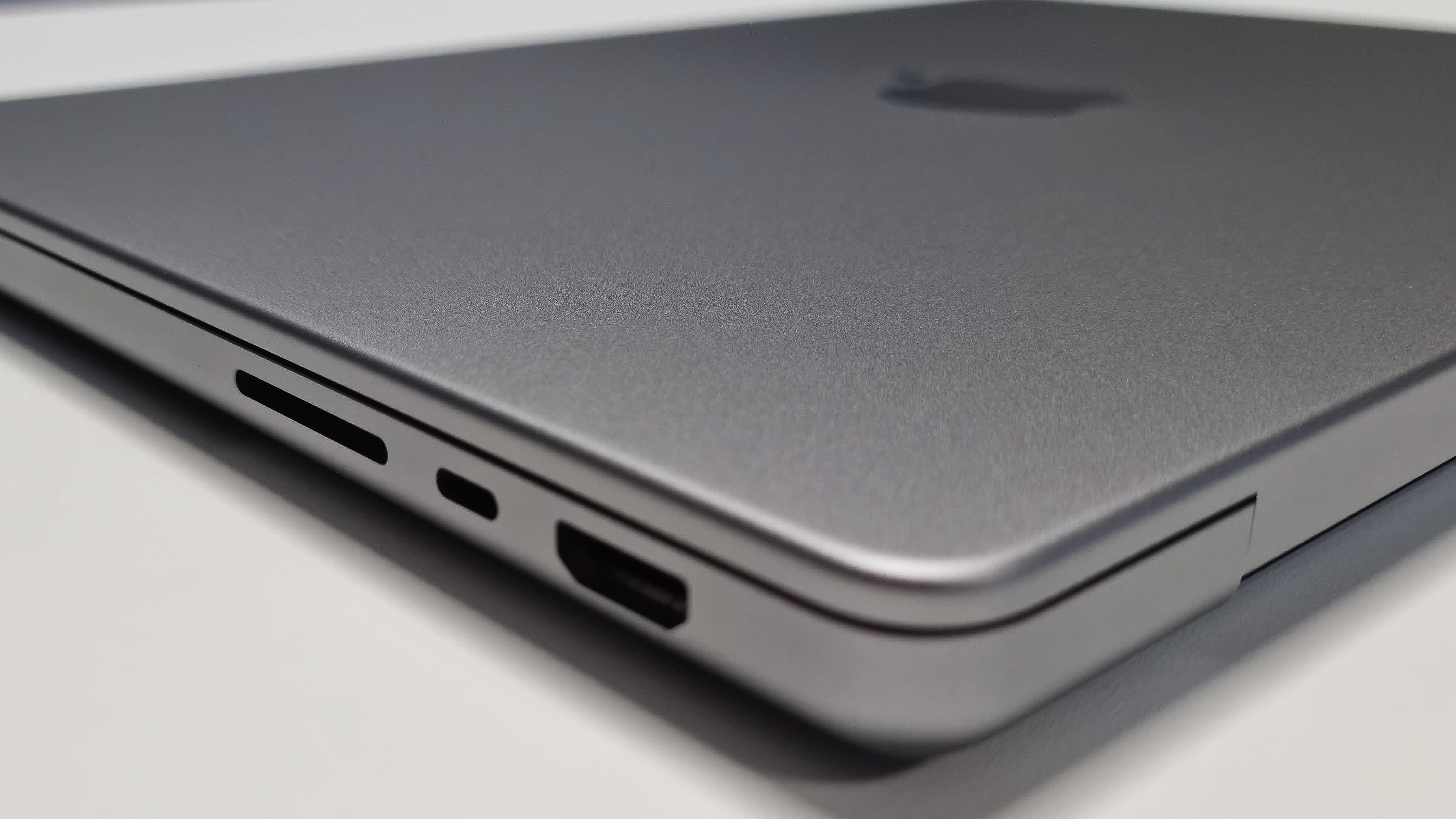
The MacBook Pro 14-inch also comes with a range of new ports. There’s three Thunderbolt 4 ports, one HDMI port, an SDXC card slot, and a MagSafe 3 port, up from the two or four Thunderbolt ports of previous models. This allows you to plug in an external monitor, or your camera’s memory card, directly into the laptop without needing an adaptor. It’s one of the most user-friendly moves Apple has made, and we commend them for that.
The MagSafe 3 port is used for charging the laptop up quickly. As with MagSafe ports of old, it’s held in place by magnets, and this makes it easy to attach, while also allowing it to safely detach from the MacBook Pro if it gets tugged too hard, limiting the possibility of damaging the laptop or the port itself.
As for the keyboard and touchpad, these both feel great to use, with the keyboard especially being tactile and responsive. It uses the newer ‘Magic’ keyboard, rather than the ‘Butterfly’ keyboard of previous MacBook Pros. This is a good thing, as the older keyboard was more shallow and prone to failure if crumbs or dust fell between the keys. Apple has also removed the Touch Bar, which ran across the top of the keyboard and offered context sensitive buttons. However, it has kept the Touch ID button that allows you to log in to macOS (and pay for things securely) using just your fingerprint.
Performance
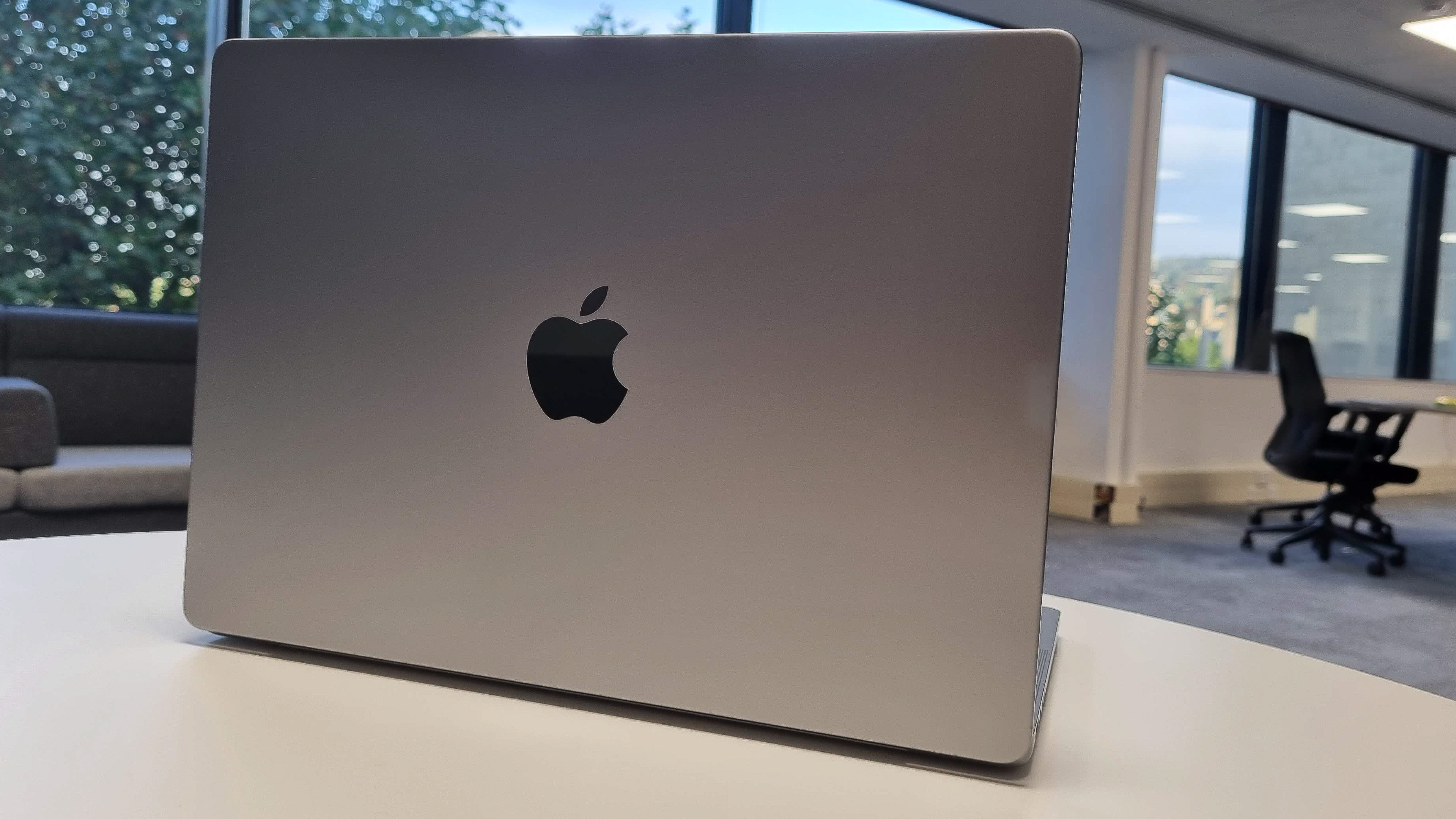
Compared with the MacBook Pro 16-inch with the same M1 Pro chip, which we also reviewed, the performance of the MacBook Pro 14-inch is pretty much the same. That’s a great thing, as it means you have an incredibly powerful workstation laptop in a compact form factor. macOS Monterey, the latest version of Apple’s operating system, runs brilliantly, and we were able to happily work with multiple applications open, while also browsing the web across numerous tabs in both Safari and Chrome.
The MacBook Pro 14-inch kept up with everything we threw at it. Loading up and editing photos in both Photoshop and Affinity Photo was incredibly quick, and effects were previewed and added almost instantly, and even more complex AI-driven tools worked brilliantly. As mentioned earlier, the screen did a phenomenal job of showcasing the images we edited, and while the 14-inch size feels a bit more cramped than the 16-inch model, the more portable design of the smaller MacBook Pro is a worthy trade off if you travel a lot.
The most impressive part of the MacBook Pro 14-inch’s performance, however, was the battery life. We edited photos and browsed the web all on battery life, and not only did performance remain consistent with when it was plugged in, the battery lasted well beyond an entire workday. In our battery life benchmark, we ran a looped 1080p video until the battery died, and the device lasted a very impressive 16 hours. It doesn’t quite match the almost 19 hours the 16-inch model lasted in the same test, but it remains an impressive feat, and far outlasts many Windows laptop that offer a similar amount of power.
While there’s a much more expensive M1 Max model of the 14-inch MacBook Pro, we found the M1 Pro to perform brilliantly for photo editing tasks.
Verdict
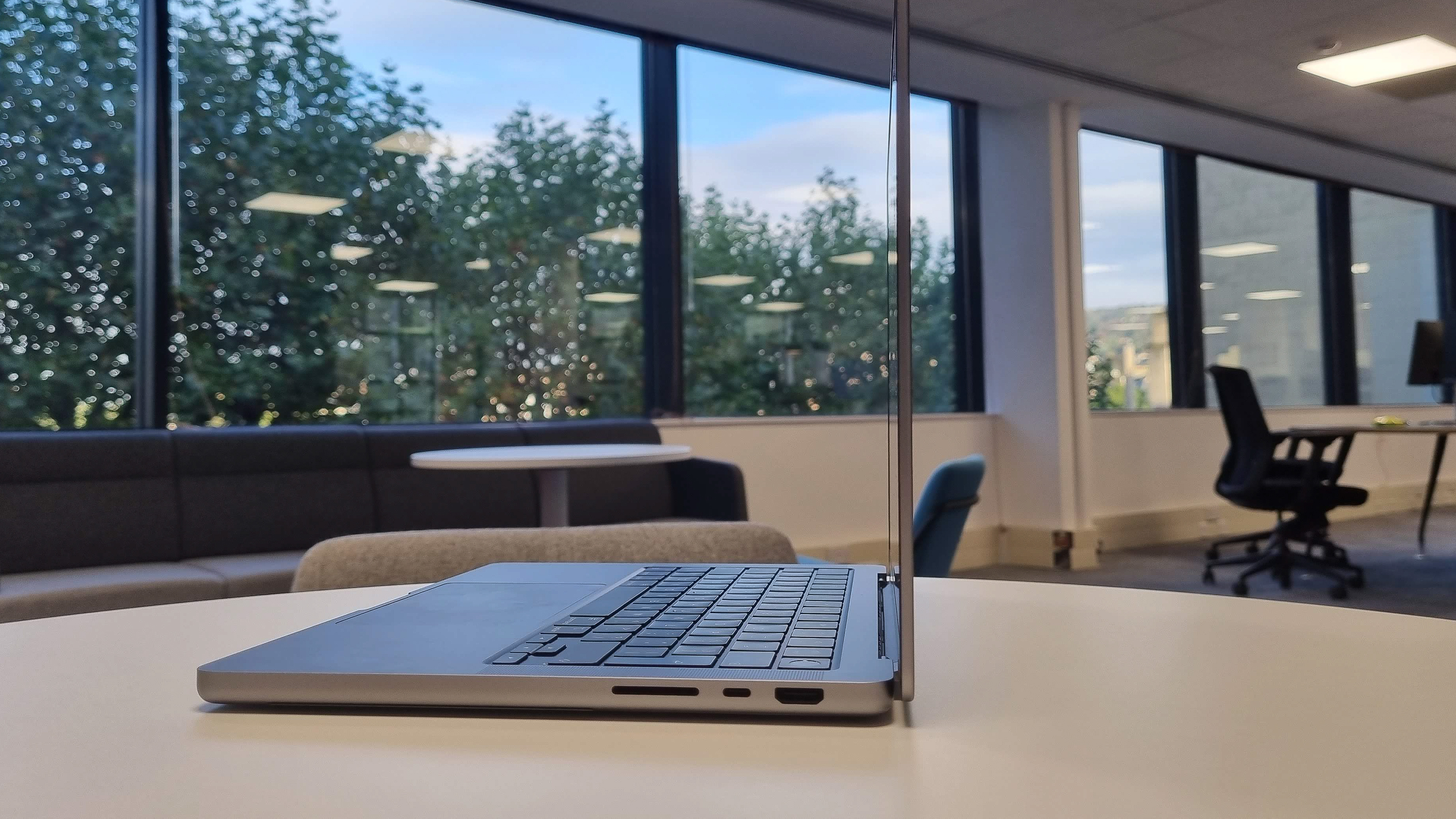
As with the 16-inch model, the MacBook Pro 14-inch is a formidable workstation laptop for photographers. Boasting a decent range of ports and a stunning screen, it’s a device that makes editing photos on a joy. It also offers brilliant performance and an impressively long battery life as well.
Best of all, it matches the 16-inch model in many aspects, including performance and screen quality, while offering a much more portable size and weight. If you don’t mind working on a smaller screen, and want a powerful laptop you can easily carry around with you to edit photos out in the field, or moving between studios, then this is the model to get.
It is expensive, however, and the level or performance may be overkill for many photographers, especially hobbyists. If you don’t need the power on offer here, you’re better off buying a more affordable laptop, such as the MacBook Air.
Apart from that, however, we really can’t fault the MacBook Pro 14-inch. Apple has made a photo editing laptop that its rivals will struggle to beat.
Other guides
• Home working for photographers
• Best student laptops
• Best Chromebooks
• Best Ultrabooks
• Best photo editing laptops
• Best laptops for video editing
• Best desktop computers
• Best Mac printer
• Best Mac webcam
• Best external hard drives
• Best monitors for photo editing
• Best USB-C hubs
Matt is TechRadar's Managing editor of core tech. Having written for a number of magazines and websites, there's no aspect of technology that Matt isn't passionate about, especially laptops and PC gaming.

